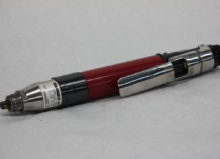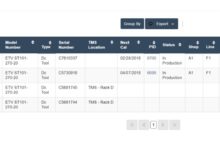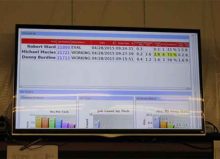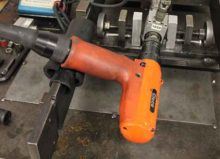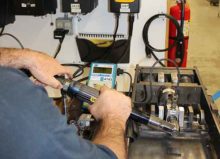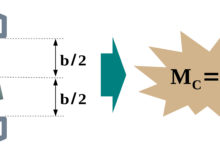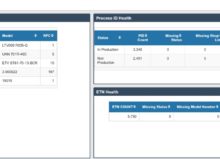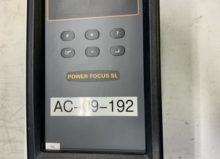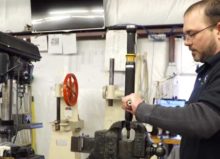What Type of Electric Nutrunner Do You Need?
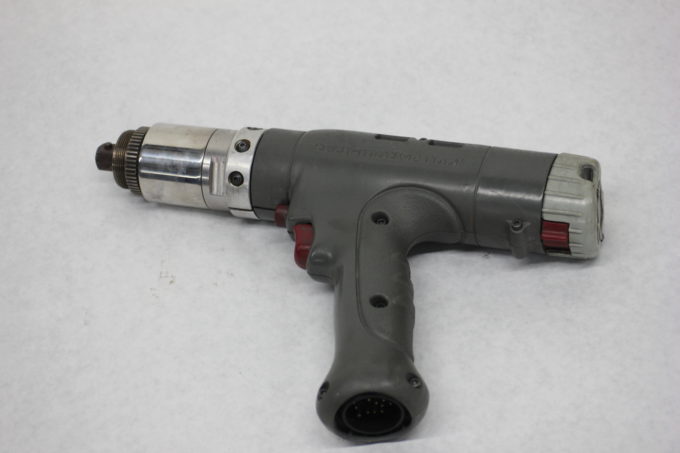
Selecting the Right Electric Nutrunner
Using the right electric nutrunner is essential for eliminating errors, increasing precision, and providing assembly flexibility when needed. When selecting electric nutrunners, you should be aware of two critical parameters: angle and torque.
With many electric nutrunner options available, it may be difficult to figure out which tool best addresses your requirements. Depending on assembly application specs, you may even need several nutrunner tools to optimize finished products.
Keep reading to learn more about nutrunner tools, their purpose, and an overview of the many options available to you.
An Overview of Electric Nutrunners
Electric nutrunners rely on DC controllers for their power supply, while pneumatic ones do not. Although pneumatic nutrunners are available on the market, and have been commonly used in the past, they do not provide the exceptional torque control that’s needed for dependable fastening results.
Electrical nutrunners/torque wrenches offer multiple manipulations that include tightening, turning, beveling, reaming, and tapping. Additionally, tightening cycles can be monitored via a nutrunner cycle counter to further optimize quality control results. These nutrunner tools can also be integrated with systems involving monitoring and quality control software.
Overall, electric nutrunners can help you increase productivity and reduce downtime. The real challenge is selecting the best nutrunner for your application.
The Main Types of DC Nutrunner Tools
The primary differences among nutrunner tool types involve the design, power supply, and angle of the tool. The three main types of nutrunners include: right angle, straight/in-line, and pistol-grip. Read on to learn more about these three types.
Right Angle
Lightweight and ergonomically designed to reduce hand fatigue, right angle electric nutrunners solve space-restriction problems affecting fastening applications.
Straight/In-Line
Straight electric nutrunners are the most versatile type of nutrunner because they can be used in nearly all applications except for tight spaces. Additionally, in-line nutrunners are typically straight nutrunners.
Pistol-Grip
Nutrunner torque wrenches with pistol-grip capability are held similar to the way a power drill is held in one hand. Mostly used on vertical application surfaces, pistol-grip nutrunners also have a square drive that can hold different-sized sockets.
When high torque is necessary, pistol-grip nutrunner tools facilitate two-handed manipulation using a reaction bar for bracing purposes. Pulling a switch with your index finger engages the trigger throttle instantly.
When Should You Use an Electric Nutrunner?
The high-torque output of an electric nutrunner makes them indispensable for use in the following applications:
- Construction of large buildings, homes, multi-level healthcare facilities, manufacturing plants, and other heavy construction conditions
- Railroad, rapid transit, automobile ore mining, and energy generation equipment and facilities where strict regulations regarding nut and bolt strength are rigorously enforced
- Aerospace and military applications that demand precision, federal, and state rule compliance, as well as 100% reliability of bolt/nut tightness
It’s important to note that for tasks involving volatile chemicals, liquids, and gasses, you should always use a pneumatic torque wrench. This will eliminate the risk of combustion.
Pneumatic Versus Electric Nutrunners
Although electric nutrunner/torque wrenches offer better speed than their pneumatic counterparts, there are advantages and disadvantages of using both.
Electric Nutrunner Advantages & Disadvantages
Advantages:
- Ergonomic Handle Design (Reduces Hand Fatigue)
- Increases Energy Efficiency
- Increases Productivity
- Reduces Overhead Costs
- Offers Exceptional Versatility & Flexibility
Disadvantages:
- Heavier than Most Pneumatic Nutrunners
- Faster Wear & Tear on Electric Cords
Advantages & Disadvantages of Pneumatic Nutrunners
Advantages:
- High Accuracy (Consistent Mediation Between Clutch & Speed Response)
- Ensures Torque Repeatability
- Minimal Vibration & Noise
Disadvantages:
- May Not Allow Some Tightening Strategies (For Example, Torque Angle)
- Not as Fast at Detecting Torque Shifts
Find the Right Electric Nutrunner With Help From Encore Systems
Providing exceptional repairs, tool management services, and certified equipment, Encore Systems is a name you can trust. We understand how challenging it can be to select the right electric nutrunner. We carry a wide selection of both pneumatic and electric torque wrenches, and can help you find the perfect solution for your needs.
Click here to browse our inventory. If you would like to request a quote, call us at (937) 249-0712 or fill out our online form today.

